
Maybe you’ve heard of Choco Pie, Pocky or even Unagipie, but have you ever wondered how your Japanese sweets are made? These fascinating factory tours are a great way to learn more about your favorite treats!
Modern Japanese snacks: A blend of sweet and savory
In the past, Japanese snacks and sweets often used rice, beans and eggs. These simple ingredients can be found in popular snacks like dango, dorayaki and senbei. In modern times, the number of ingredients used in snacks and sweets has multiplied, giving birth to popular snacks well known today like Pocky and Choco Pie. In fact, Japanese confectionery companies will often use local ingredients to create regional flavors, or release limited-edition seasonal flavors. Regardless of region or season, there’s always something delicious available at the local supermarket or convenience store next door.
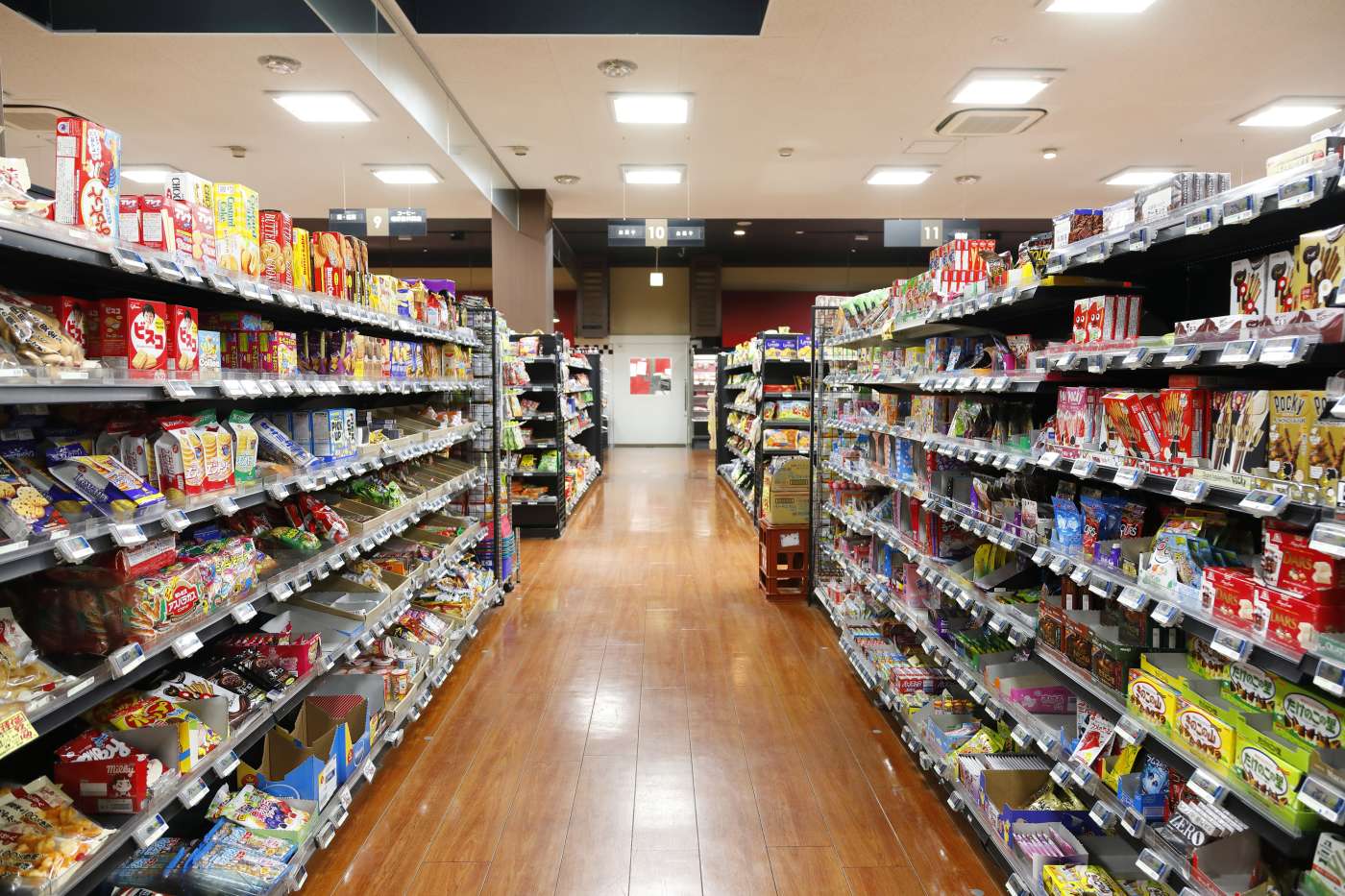
With the variety of snacks available, Japan always lets you feel like a kid in a candy shop.
Although all of these fun flavors might not be available overseas, a number of Japanese snacks and sweets can be found at supermarkets abroad. But have you ever wondered how your favorite treat was invented or how it was made? Taking a tour of a sweets factory during your trip to Japan is a great way to learn more about your favorites or something new.
Join the Lotte Sweets School factory tour
Lotte, one of the biggest producers of chocolate in Japan, has an interactive factory tour in Saitama City, Saitama Prefecture, known as Lotte Okashi Gakko, or “Lotte Sweets School.” The factory tour offers two courses – one that teaches visitors about the production of Ghana chocolate, and another on “pie no mi,” one of their famous products. You’ll find out which tour you’ll be participating in on the day, so you never know what to expect, adding to the fun!
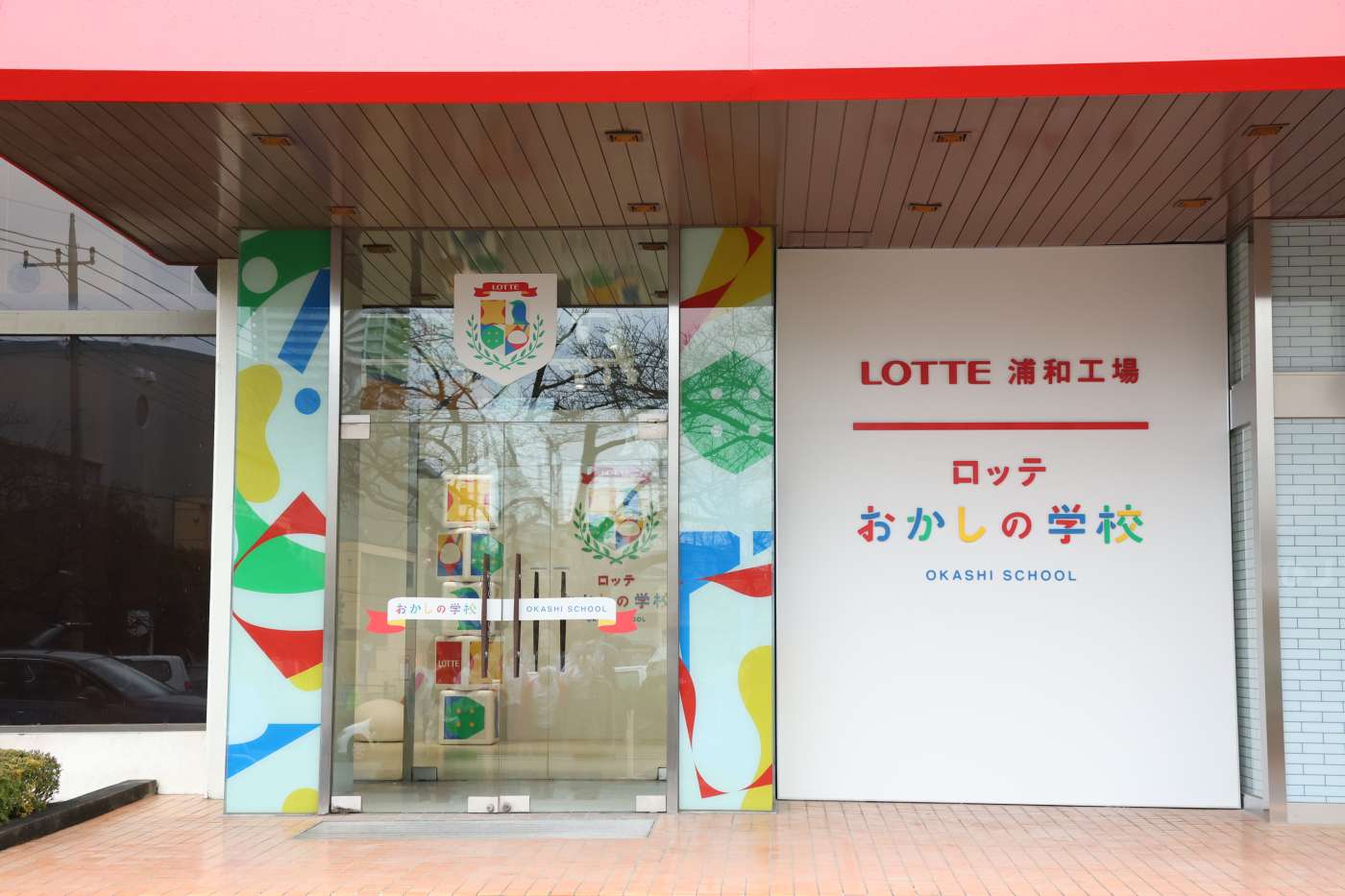
Children and adults alike will love going to this sweets school.
Photo Credit: LOTTE
On their 90-minute tour, visitors are given a textbook with a quiz, and can search for the answers on the factory tour. Visitors can also observe the production process and witness sweets prepared and packaged for shipping. What’s more – the entire factory smells like chocolate, making this a wonderful experience for chocolate-lovers!
Due to its popularity, reservations fill very quickly, so if you’re planning to visit the Lotte Okashi Gakko, make sure to plan well in advance and make a reservation through their official website. Do note, though, that reservations and tours are currently only available in Japanese.
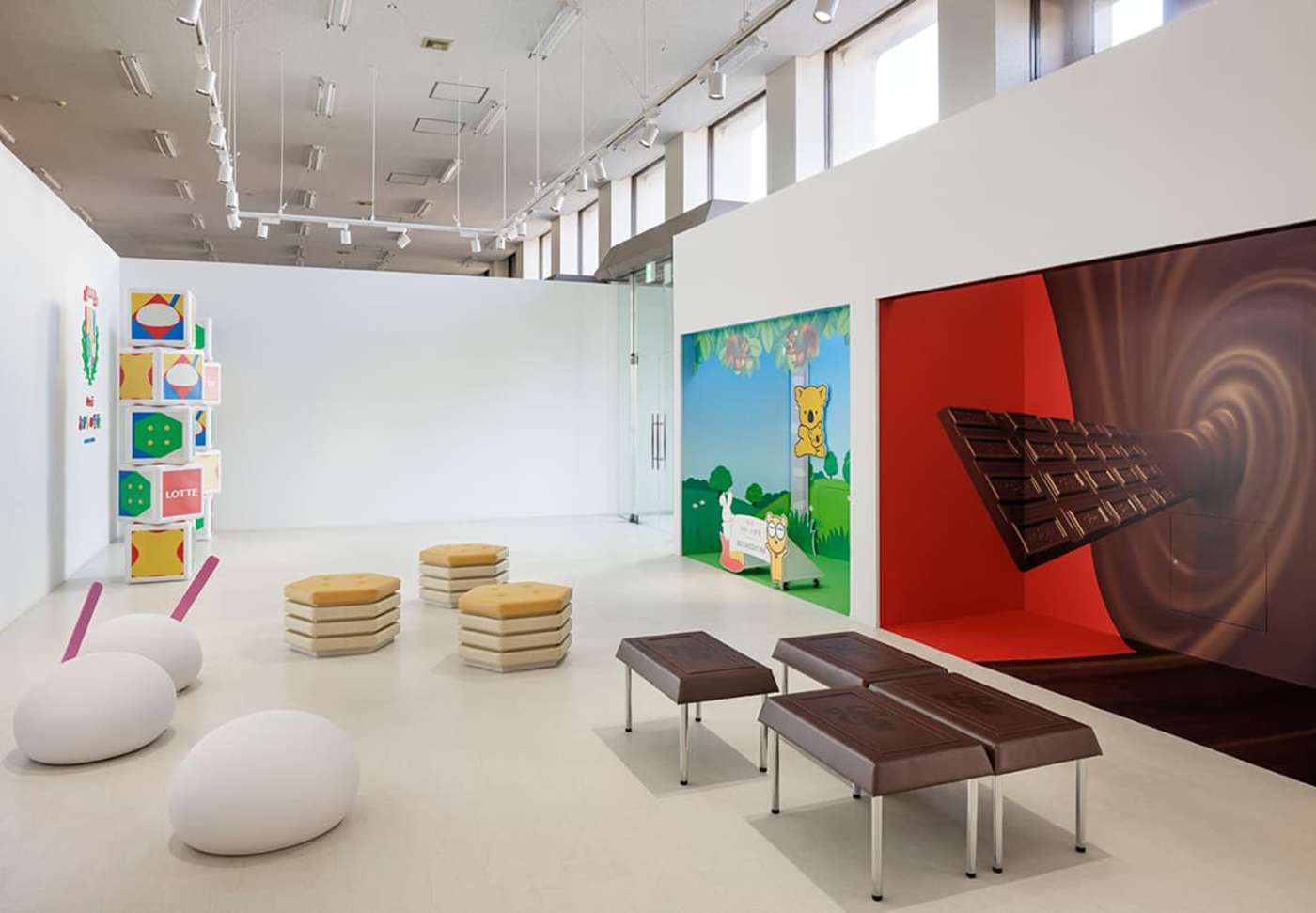
Imagine if Lotte Sweets School’s furniture was edible!
Photo Credit: LOTTE
Step into wonderland at Glico Pia East’s Pocky and Pretz factory tour
You may know Glico from the famous “running man” sign in Osaka. In Saitama Prefecture’s city of Kitamoto, Glico Pia East is part-factory, part-museum that gives visitors a view to the production process of world-famous Pocky (sold as Mikado in Europe) and Pretz. Since its launch in 1966, Pocky is Glico’s longest-selling product, and was recognized in 2020 by the Guinness World Records as the best-selling chocolate-covered biscuit brand.

An army of Pretz sticks make their way down a conveyor belt, ready to be packaged and sent to consumers.
Photo credit: Ezaki Glico Co., Ltd.
At the Glico Pia East Factory, travelers can embark on a 70-minute free tour. The tour includes a short video illustrating the history of Pocky and Pretz, a tour of the museum and production lines, and an interactive quiz. On weekends, visitors also have the opportunity to decorate their own giant Pocky for an additional cost at the end of the tour.
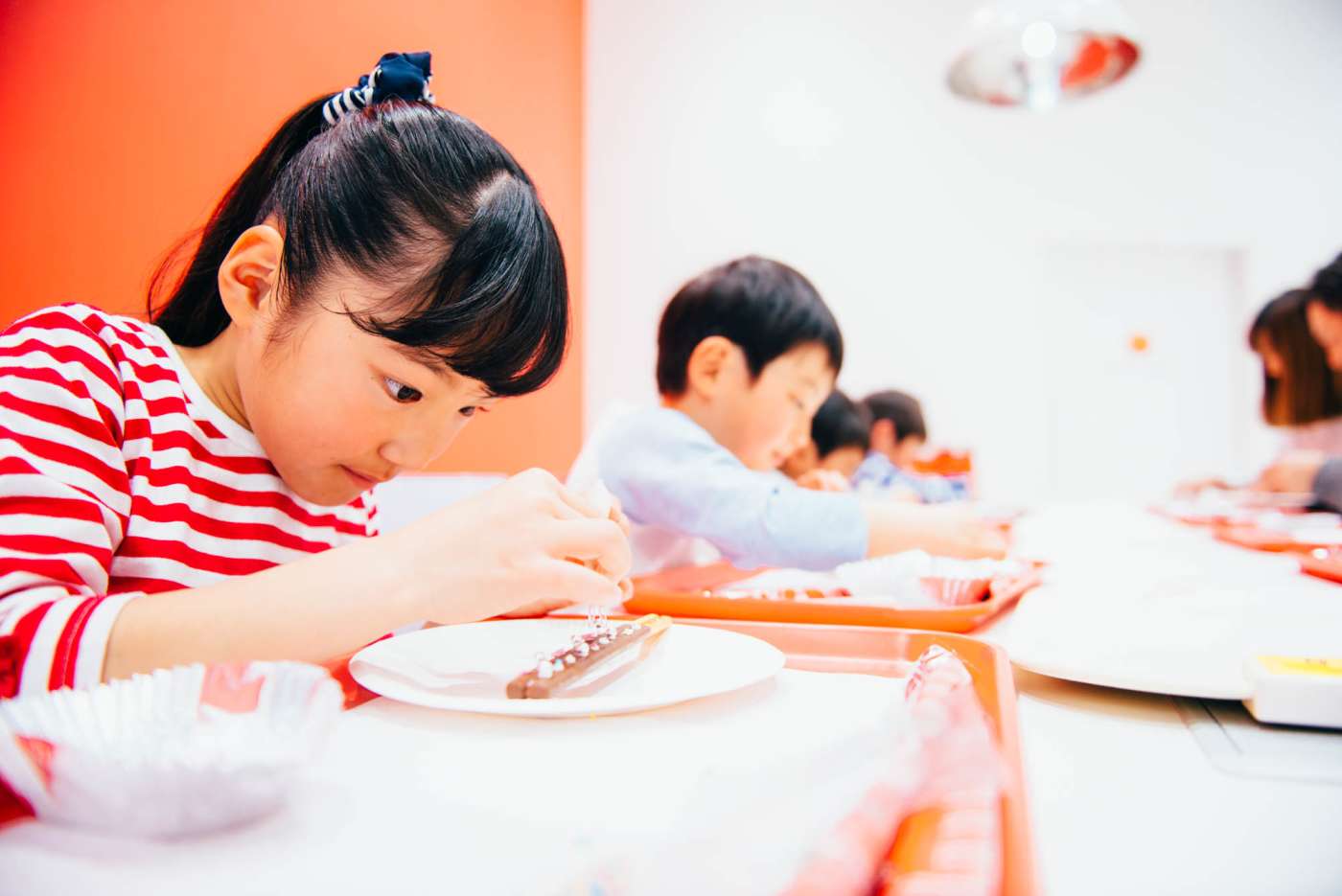
For kids, the highlight of the entire factory tour might be decorating their own Pocky.
Photo credit: Ezaki Glico Co., Ltd.
Currently, reservations and tours are only available in Japanese, and to make a reservation you must create an account before booking.
Discover sweet and savory Unagipie on Shunkado’s Unagipie Factory Tour
Confectionery maker Shunkado’s “Unagipie,” which literally translates to “eel pie,” is a famous treat sold around Shizuoka’s Hamamatsu area and is popular amongst foreign and local visitors alike. Inspired by the French “palmier” pastry, with layers of delicious butter pastry and crispy, caramelized sugar, alongside a subtle touch of eel extract, garlic and other flavorings, this sweet, savory treat is addicting.
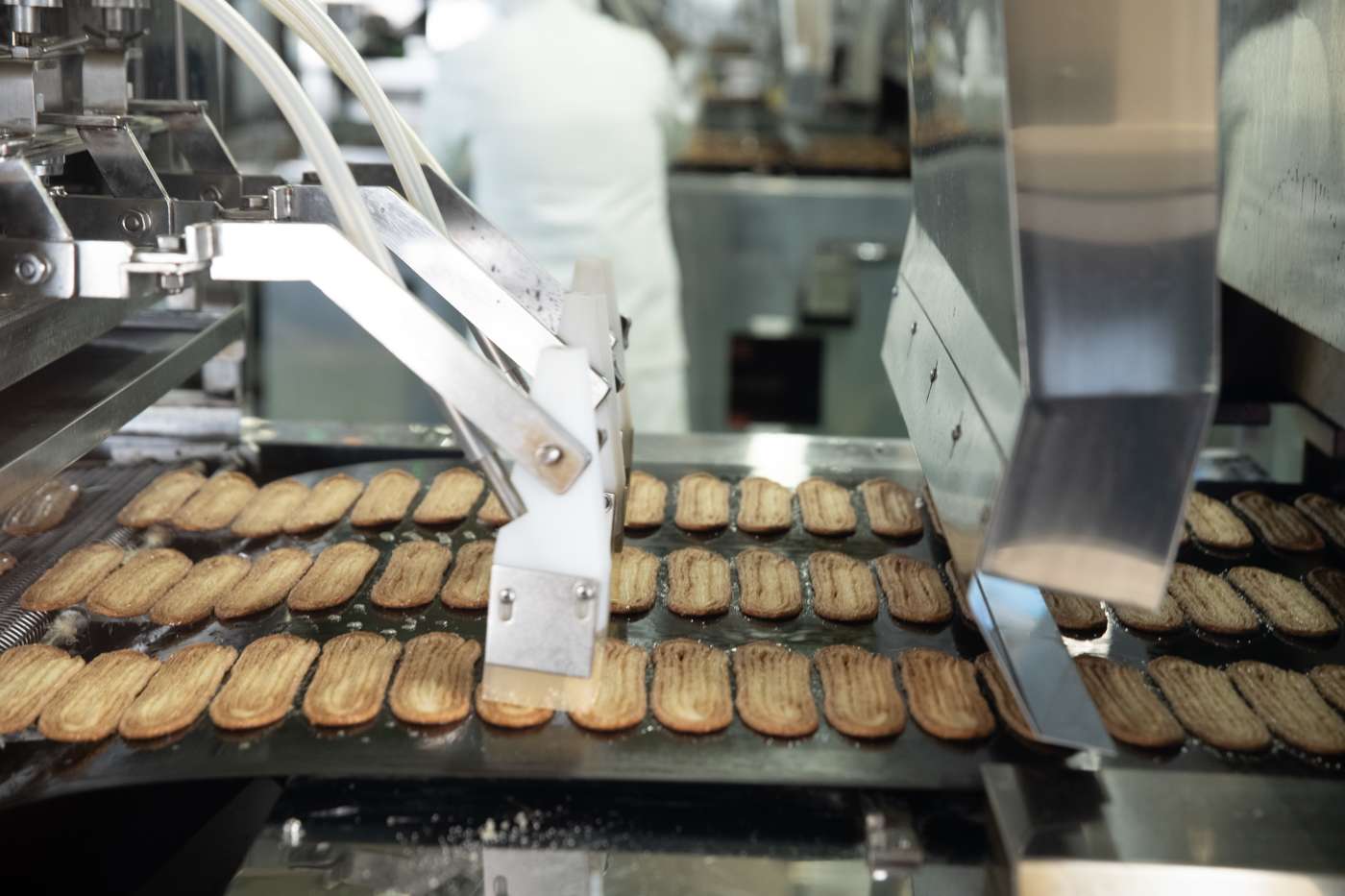
Watching hundreds of Unagipie float by on a conveyor belt is mouthwatering.
Photo credit: Shunkado
Located in Hamamatsu city in Shizuoka prefecture, visitors will learn everything about the wonderful world of Unagipie on this tour. There is also a factory-direct shop on the first floor that sells a variety of Unagipie pastries, and even an Unagipie Café where visitors can enjoy different desserts featuring Unagipie.

Unagipie café menu features limited-time options, making each visit to the factory unique!
Photo credit: Shunkado
At the Unagipie factory, there are three tours available: a self-guided tour, a free guided tour, or a special tour that ends with the opportunity to enjoy a freshly baked Unagipie. For the guided tour and special tour, please make sure to make a reserve in advanced! Reservations for the guided tour can be made over the phone, but reservations for the special tour can be made online through the Unagipie Factory’s official website.
Planning your delicious Japanese snacks and sweets journey
While you might be ready to jump in and re-enact “Charlie and the Chocolate Factory” the second you land in Japan, it’s essential to plan your snack adventure in advance. Since these tours are highly sought after and tend to fill up quickly, prior reservations are a must.
It’s also important to keep in mind that online reservations and tours are conducted in Japanese. While this may seem intimidating, consider using translation applications on your phone or bringing along a friend who speaks the language. Additionally, it might be possible to inquire about English-speaking tours or additional support for non-Japanese speakers, so make sure to keep your options open!
-
About the author
Author: Melanie Sweeney
Profile: Born and raised in the United States, Melanie moved to Japan in 2014 and has stayed ever since. You can often find her exploring the city, enjoying afternoon tea with friends or investigating the latest cultural event nearby.





















































